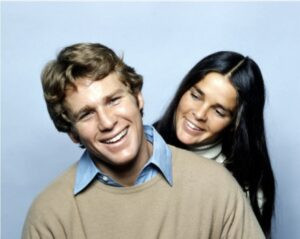
Ali MacGraw became a Hollywood superstar overnight. But just as quickly as she rose to fame, she disappeared from show business altogether.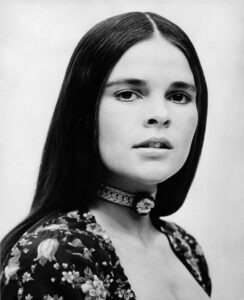
Ali MacGraw
Ali MacGraw – born Elizabeth Alice MacGraw – was born on April 1, 1939, in Pound Ridge, New York, USA. Her mother, Frances, was an artist and worked at a school in Paris, later settling in Greenwich Village. She married Richard MacGraw, who was also an artist. In 1939, Ali was born.
Ali’s father Richard supposedly had issues from his own childhood which made him a little bit different from others.
He had survived a terrible childhood in an orphanage, running away at the age of 16 to go to sea. He would later study at an art school in Munich, Germany.
“Daddy was frightened and really, really angry. He never forgave his real parents for giving him up,” Ali explained, saying said her father’s adult life was spent “suppressing the rage that covered all his hurt.”
Ali MacGraw – childhood
Money was short for their family, too. Frances and Richard, together with Ali and her brother, Richard Jr, had to move into a house on a Pound Ridge wilderness preserve which they shared with an elderly couple.
“There were no doors; we shared the kitchen and bathroom with them,” Ali said. “It was utter lack of privacy. It was horrible.”
Mom Francis worked with several commercial-art assignments and supported the family. At the same time, Richard had a hard time selling his paintings, and as a result became very frustrated. Ali’s brother Richard became a victim for his anger at home.
“On good days he was great, but on bad days he was horrendous,” she recalled. “Daddy would beat my brother up, badly. I was witness to it, and it was terrible.”
Ali was the daughter of artists, and she knew that she, too, wanted to go into a creative line of work as she got older. She earned a scholarship at the prep school Rosemary Hall, and in 1956, she moved to study at Wellesley College in Massachusetts
By the age of 22, Ali MacGraw moved to New York and got her first job as an assistant editor at Harper’s Bazaar, working with photographers as an assistant.
Fashion work in New York
Fashion editor Diana Vreeland hired Ali as, what she recalls as, a “flunkie”. Ever seen the film The Devil Wears Prada? Well, it was pretty much that.
“It was ‘Girl! Get me a pencil!’,” MacGraw recalled.
The future Hollywood celebrity worked her job as an assistant for several months. Then, about six months in, fashion photographer Melvin Sokolsky noticed her beautiful looks, and Ali MacGraw was hired as a stylist,and given a better salary. She’d end up staying in that position for six years.
“I don’t know where she got this work ethic, but Ali would come in at eight a.m., and many times I’d come back at one in the morning and she would still be doing things for the next day,” Ruth Ansel, a former art director of Vanity Fair and Harper’s Bazaar recalls.
Ali was great as a stylist. But soon, she was asked to work in front of the cameras as a model. It didn’t take long before she was on magazine covers all over the world, even appearing in television commercials. For thing led to another, and Ali tumbled headfirst into the profession of acting.
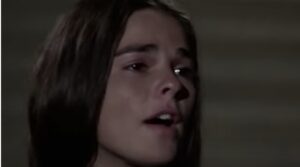
She had been sketched nude by Salvador Dali a couple of years earlier. But when the surrealist artist started sucking her toes, MacGraw decided that she’d rather be an actress than a model.
Ali MacGraw – films
Ali went straight from an unknown stylist and into the world of cinema, and boy, did she do it with a bang.
She was untutored in the art of film, which gave her acting another dimension. Her natural beauty was stunning, and the audience loved her.
Following a small role in A Lovely Way to Die (1968), she was asked to star in the 1969 film Goodbye, Columbus. It turned out to be a great call, with MacGraw receiving a Golden Globe for Most Promising Newcomer – Female. The following year, she got her big international breakthrough with a role that would pretty much sum up her career.
Ali MacGraw had received a script from her agent. She’d read it and wept twice because of how much she loved it. She decided she really wanted a part in it, and got herself a meeting with the film’s producer Robert Evans – who at the time was Paramount Picture’s head of production – at the Beverly Hills Hotel’s Polo Lounge. Not only did Evans think she was perfect for the part in the movie Love Story, he absolutely fell in love with her.
MacGraw – playing the role of Jenny – acted alongside Ryan O’Neal in the movie Love Story. The American romantic drama film, in which Ali played a working-class college student, became a smash hit.
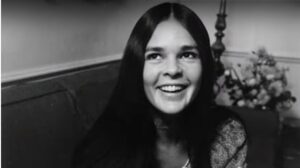
Love Story hit the cinemas in 1970, and wow did the audience cherish it. It became the No. 1 film in the United States, and at the time, it was the sixth highest grossing movie in history in the US and Canada.
Award-winning actress
MacGraw earned an Academy Award nomination for her role, and the film itself earned her another win and five Academy Award Nominations. She also won herself a second Golden Globe as Best Actress in a Motion Picture – Drama.
Film producer Robert Evans not only loved her on screen, he had fallen in love with her in real life, and that love was reciprocated. In 1969, the couple tied the knot, and two years later, they welcomed their son, Josh Evans.
Ali MacGraw was the hot new star of the 1970s, but her private life and marriage with Evans would soon come to an end. Steve McQueen had visited their home to ask her to star alongside him in The Getaway, and the two Hollywood stars clicked right away.
“I looked in those blue eyes, and my knees started knocking,” MacGraw recalled. “I became obsessed.”
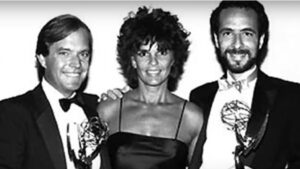
MacGraw and McQueen had an affair, and she soon left Evans to live with the actor in Malibu, along with her son Josh.
“Steve was this very original, principled guy who didn’t seem to be part of the system, and I loved that,” she said.
Ali MacGraw – Steve McQueen
But after a while, Ali realized that Steve McQueen had his own problems. Following his father abandoning his mother, a then-14-year-old Steve was sent to a school for delinquent children. MacGraw said he never trusted women after that.
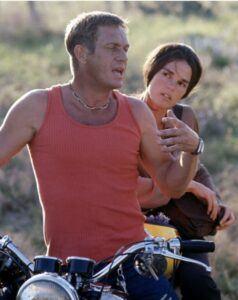
He didn’t like that she worked and had her own career. For a while, Ali stayed home to raise their sons. But her husband’s demands were something Ali simply couldn’t accept in the long run.
Not only that, but he’d explode if she even looked at another man. He also wanted her to sign a prenuptial agreement, promising not to ask for anything if they’d divorce. She abided by the agreement when they did divorce in 1978.
“I couldn’t even go to art class because Steve expected his ‘old lady’ to be there every night with dinner on the table,” she recalled.
“Steve’s idea of hot was not me. He liked blond bimbos, and they were always around.”
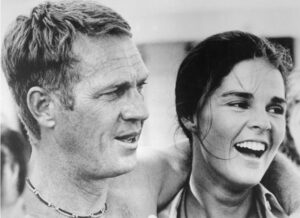
This was the start of a pretty dark time in MacGraw’s life. She arrived on set to shoot the 1978 film Convoy both drunk and high, which prompted her to quit drugs.
Leaving show business
At the same time, several of her movies, such as Players (1970) and Just Tell Me What You Want (1980) flopped.
“It’s brutal for women,” MacGraw told The Guardian about returning to show business in the late 1970s.
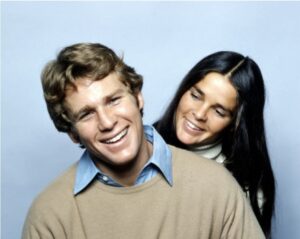
“I don’t think there’s a woman over 40 who’s ever been conspicuously in the spotlight who doesn’t get sick of the kind of questioning the media lays on you, the fashion industry, all of it. It’s cruel.”
MacGraw had a short stint as a Hollywood superstar actress. Thereafter, she decided to start working in interior design instead, but didn’t fully give up on her show business career. She appeared in the television miniseries The Winds of War (1983) and China Rose (1985), but soon, her life would change for the worse.
Ali MacGraw simply couldn’t get any work in film, and she thought she was useless. At the same time, she didn’t feel complete unless she had a partner, describing being in love like “a drug high”.
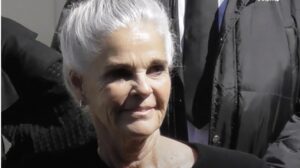
She felt alone and desperate, and drank heavily. In 1986, she checked herself into the Betty Ford Clinic in California.
“The worst stuff happened when I drank,” she said. “I lost my judgment; I fancied other women’s husbands.”
Family tragedies
Her son Josh Evans was 15 at the time and had a hard time watching his mother suffering. MacGraw spent 30 days in group therapy and came out a stronger person.
In 1993, another family tragedy occurred when her house in California burnt down due to a wildfire. She then decided to move from Los Angeles and settled in a town near Santa Fe, New Mexico.
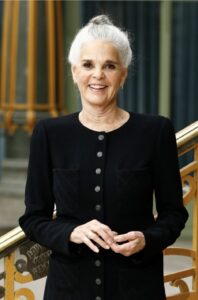
“I live in a little village north of Santa Fe, New Mexico called Tesuque,” she revealed last year.
According to McGraw, her neighbors don’t see her as a former Hollywood star – instead they appreciate all the community work she’s been doing.
For example, she has been doing volunteer work at the annual International Folk Art Market in Santa Fe, New Mexico.
Ali MacGraw left acting, but in 2006, she found herself once again on stage. She reunited with her Love Story co-actor Ryan O’Neal in the Broadway adaptation of the Danish film Festen.
Outside of the Broadway show, MacGraw’s been out of the spotlight the last couple of decades. She’s put her heart into work for animal rights … and produced plenty of successful yoga videos.
Speaking to the Herald-Tribune in 2019, MacGraw stated that she’s still open to new adventures and work.
“One of the lucky things for someone my age is that I’m open and curious,” MacGraw said. “There’s not just one thing I love to do and feel bereft if I can’t. But I know that I’m not happy when I’m not doing something creative.”
Josh Evans – Ali MacGraw
Even though Ali left acting, her family still has a foot in the business. Son Josh Evans is an actor and director, and he’s made a great name for himself in Hollywood.
Also, he looks so much like his mother!
Being the child of Hollywood celebrities Robert Evans and Ali MacGraw certainly came with plenty of pressure.
But for Josh Evans, born in January of 1971, it was pretty much show business he wanted to do from the start.
The first job he ever wanted to do, however, wasn’t in the film business. He didn’t dream about working as an actor, but it was just one of those things that happened.
In 1989, Josh Evans had a small part in Dream a Little Dream (1989), but he wanted to do more. As a teenager with nothing to lose, he used to go to the manager’s office to see the breakdowns of movies being made.
Josh Evans – actor & director
That’s when he met someone he recognized in famous director Oliver Stone. He was making Born on the Fourth of July at the time, starring Tom Cruise. And Josh wanted in.
“At the time I just knew [Oliver Stone] from Platoon. He was making a movie with Tom Cruise and there was a role for the little brother. I wanted to play that part, so he got me a meeting with Oliver Stone,” Josh Evans recalls.
“When I sat with him, Oliver asked ‘Oh, you think you look like Tom Cruise?’. Now knowing him, I realize he was mocking me, but I said, ‘Yeah, I do.’ So, he said, ‘We’ll see what happens.’ Four months later, I got a call to audition and I got the part. It was very exciting and you could feel how special that movie was going to be.”
Since then, Josh has had a great career both acting and directing. He starred in the biographic film The Doors in 1991 and since, he’s been both acting and directing.
With eight films on his resume as a director, he actually had Michael Madsen starring in his 2015 film Death in the Desert. But what does he like best?
“I am definitely more comfortable on the side of the camera that does not show myself,” Josh Evans says.
“If an interesting opportunity presents itself, I am not opposed to it. I think there are other people out there who are more qualified and want it more than I do. As far as directing and telling my stories, I would do that for free, whereas acting is more of a job, but I enjoy it once I do it.”
Josh Evans – family
Josh is a really handsome man, and the resemblance to her mother Ali MacGraw truly is great, especially in his big wonderful eyes.
In 2019, his father – Ali’s ex-husband – Robert Evans passed away. However, the family had the great memory of being together for him when he was honored with a star on the Hollywood Walk of Fame in 2012.
Josh has been married twice. In October 2012, he married American singer and musician Roxy Saint. By then, their son Jackson was two years old – Grandma Ali MacGraw loves spending time with her wonderful family.
“He’s so wonderful,” MacGraw said about her son. “He’s my favorite human being on the planet, and he goes out with a girl I’m nuts about. Their relationship is so much about, among other things, friendship and respect.”
Ali MacGraw and Josh Evans surely are very proud of their wonderful family. We wish them all the best in the future, and who knows, maybe we’ll see them on the same stage or movie set in the future?
Neighbors Made Me Put up a Fence to Hide an ‘Ugly’ Car in My Yard – A Week Later, They Begged Me to Remove It
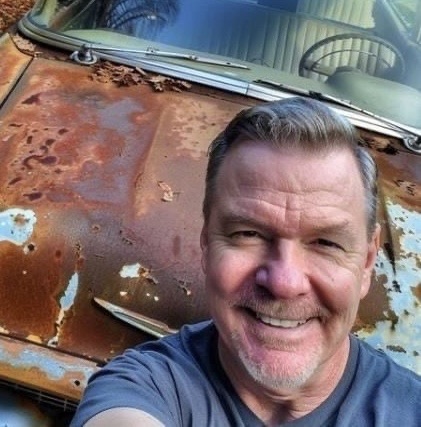
I didn’t quite see my neighbors’ vintage ’67 Chevy Impala the same way, but to me it was more than just a rusty heap. What was supposed to be a fight over a “eyesore” developed into something none of us saw coming. It altered our peaceful suburban street in ways we never would have imagined.
My dad left me an ancient, beat-up 1967 Chevy Impala. I saw it as a project I wanted to restore and a reminder of my father, even though most people just saw it as a rusted automobile. My garage was piled high with tools and spare components, so the automobile sat in my yard. I’d been trying to save money and find time to work on it, but I knew it looked awful.
But my neighbors were far more concerned about this than I was. I was out inspecting the Impala one bright afternoon when I suddenly remembered something. Gus, my dad, was demonstrating how to change the oil. He smiled, his thick mustache twitching. “You see, Nate? It isn’t complicated science. Simply perseverance and hard work,” he had stated. A piercing voice jolted me back to reality as I was lost in thinking as I ran my fingers over the worn paint. A man leaning against a vintage car’s front end.
Please pardon me, Nate. Could we discuss about that? I turned to see my next-door neighbor, Karen, pointing disgustingly at the Impala. Hello, Karen. What’s going on?” Knowing where this was going, I asked.”That vehicle. It is aesthetically offensive. With crossed arms, she remarked, “It’s destroying the appearance of our street.” I exhaled. “I realize it appears rough right now, but I intend to fix it. It was my dad’s, but Karen cut him off, saying, “I don’t care whose it was.” It must be removed. or at the very least remain unseen. She pivoted and marched back to her house before I could reply.
As I watched her leave, I noticed a knot in my stomach. I vented to my girlfriend Heather over dinner later that night. “Do you think she’s real? “It seems as though she is unaware of the significance this car holds for me,” I remarked, picking at my salad. Squeezing my hand, Heather reached across the table. “I understand, sweetie. However, would you try working on it a little bit more quickly? simply to demonstrate to them your progress? I nodded, but I knew in my heart that it wasn’t that easy. Time was of the essence, and parts were costly.
When I returned home a week later, I discovered a notice from the city hidden beneath the wiper on my “offending” car. As I read it, my stomach fell. The general idea was to either remove the car or conceal it behind a fence. I clenched the piece of paper in my hand, feeling a surge of rage within. This was absurd. I required guidance. I picked up my friend Vince, who also loves cars. “Hey, buddy, have a moment? I’d like your opinion on something. Okay, what’s going on? Vince’s voice came across the phone crackling. I described the circumstances, becoming more irritated as I spoke. Before he spoke, Vince was silent for a while.
He spoke carefully and added, “Build the fence, but add a twist.” “What do you mean?” I curiously inquired.”You’ll discover. This weekend, I’ll be here. This will provide for some enjoyable times. Vince arrived that weekend with a truck full of paint and wood. For the next two days, we worked on erecting a towering fence to enclose my front yard. Vince told me about his strategy as we worked together. “We’re going to decorate this fence with a mural of the Impala. Every rust mark, every ding. We’ll make sure they remember the car if they decide to hide it. Loved the idea, I smiled. “Let’s get started.”On Sunday, we painted. Even though none of us was artistic, we were able to replicate the Impala on the fence really well.
For added effect, we even made some of the flaws seem worse. I was satisfied with my work when we took a step back to admire it. I decided to find out what the neighbors thought of this. It didn’t take me long to learn. There came a knock on my door the following afternoon. When I opened it, a cluster of neighbors surrounding Karen as she stood there. Their expressions were a peculiar mix of desperation and rage. “Nate, we need to talk about the fence,” Karen said in a tight voice. Hiding my delight, I leaned against the doorframe. How about it? I followed your instructions.
The automobile is now hidden.An older man called Frank, one of the other neighbors, raised his voice. We understand that we requested you to conceal the car, but this mural is simply too much, son. I arched an eyebrow. “Too much? In what way? Karen let out a deep sigh. “It’s more awful than the car itself. It appears as though you’ve transformed your entire yard into… “A show of art?” Unable to control my sarcasm, I made a suggestion. “A disgrace,” Karen firmly concluded. “We would prefer to see the actual car instead of this… monstrosity.”Maybe a little too much, I enjoyed their anguish as I crossed my arms. Now, allow me to clarify. You made me spend money on a fence after complaining about my automobile, and now you want me to pull it down? They all gave bashful nods.
After giving it some thinking, I decided to remove the fence—but only under one condition. As long as I’m working on fixing the car, you guys promise to quit whining about it. Alright?They glanced at one another before grudgingly agreeing. I could hear them whispering to each other as they left. I started tearing down the fence the following day. Some of my neighbors were seeing me work with interest. Even Tom, one of them, stopped over to talk. “I never really looked at that car before, Nate,” he remarked, pointing to the Impala. However, after getting a closer look, I can see that it has potential. Which year is it?I grinned, always up for a conversation about the car. It’s a 1967. When I was a little child, my dad purchased it. Tom gave a grateful nod. Good. My brother has a thing for vintage autos.
In the event that you require assistance with the restoration, I might contact him. I took aback at the offer. That would be fantastic. Regards, Tom. In the ensuing weeks, word of my initiative grew. To my astonishment, a number of neighborhood auto aficionados began dropping by to examine the Impala and provide guidance or assistance. I was working on the engine one Saturday morning when I heard a familiar voice behind me. “So, this is the well-known vehicle, huh?” I turned to see Karen standing there, intrigued yet seeming uneasy. I wiped my hands with a cloth and remarked, “Yep, this is her.” Karen moved in closer, staring at the motor. “I must admit that my knowledge of autos is quite limited.
How are you spending your time? Startled by her curiosity, I gave the bare outline of the project I was working on. More neighbors flocked around to listen and ask questions while we conversed. My yard quickly became the scene of an unplanned block party. A cooler full of drinks was brought out, and individuals started talking about their early automotive experiences or their recollections of owning vintage automobiles. I was surrounded by my neighbors as the sun was setting, and we were all conversing and laughing. Karen seems to be having fun as well. Looking at the Impala in the lovely evening light, it seemed better than ever, while still being rusty and battered up.
I couldn’t help but think about how much my father would have enjoyed this scene.Speaking to the group, I remarked, “You know, my dad always said a car wasn’t just a machine.” It was a narrative reimagined. Considering how many stories this old girl has brought out today, I believe he would be quite pleased. There were lifted glasses and murmurs of agreement. I noticed something as I turned to face my neighbors, who were now my pals. Despite all of the difficulty it had caused, this car had ultimately brought us all together. Though the restoration was still a long way off, I sensed that the voyage ahead would be much more pleasurable. Who knows?
Perhaps a whole neighborhood full of vintage vehicle lovers would be eager to go for a drive by the time the Impala was ready to hit the road. I lifted my cup. “To wonderful cars and good neighbors,” I uttered. Everyone applauded, and while I was surrounded by smiles and lively chatter, it occurred to me that sometimes the greatest restorations involve more than simply automobiles. They also care about the community. How would you have responded in that situation?
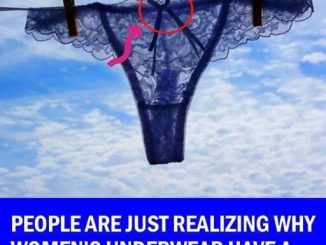
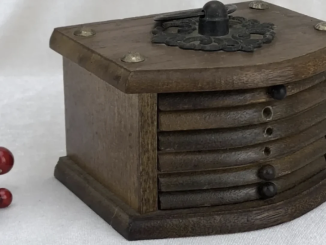
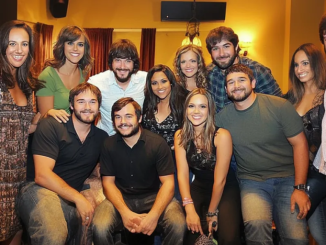
Leave a Reply